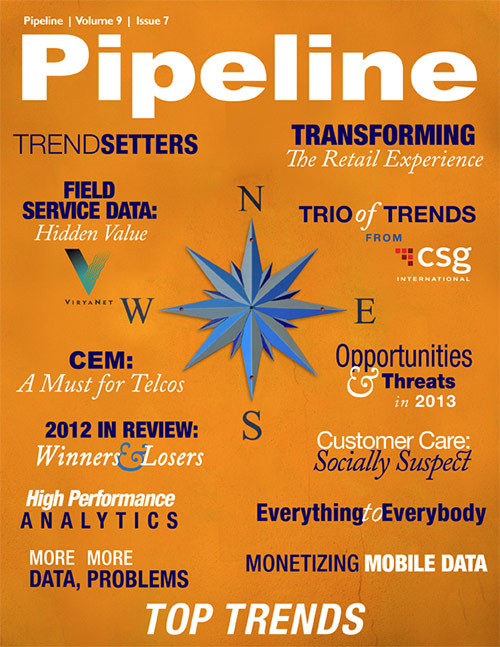2012 in Review: Winners and Losers
And software providers have been winning by reaching outside of traditional telecom silos and into adjacent industries. Ruzicka mentions Orga in utilities and Orga and ConceptWave in automotive as examples, though there are obviously many more.
However, it isn’t a free ride. “With the win comes the responsibility of scalability, reliability, availability — all the five-nines stuff,” says Ruzicka, “and IT has never had to live up to those standards.” In the coming year, perhaps we’ll see new winners and losers emerge as some software plays are able to live up to telecom subscriber expectations and others fail to do so.
Hardware
Software successes notwithstanding, this hasn’t been a year free of hiccups for Ericsson. Third-quarter profits sagged for the Swedish giant as a weak economy continued to batter all network equipment providers. The company just announced job cuts in Sweden, which puts it in the same boat as most of its competitors. However, when compared to many of its competitors (Nokia and NSN, in particular) Ericsson has been on the right side of many of the wider telecom trends.
Along with Qualcomm, Ericsson was a clear winner as the iPhone 5 launched, and Bruce Upbin at Forbes noted that as the LTE capabilities of that particular device drive LTE further into the mainstream, Ericsson will be one of the beneficiaries of increased LTE network infrastructure.
About ConceptWave
ConceptWave is a leading provider of customer, product, and order lifecycle management solutions that enable communications service providers to rapidly introduce new market offers and to empower superior customer experience. ConceptWave's unique offer is to provide an end-to-end catalog-driven suite of order fulfillment automation software with ConceptWave Order Care and Rapid CRM. ConceptWave products and solutions enable service providers to address competitive requirements and simplify the management of customers, products, and orders, for any product, on any network, in any market, using any channel. ConceptWave is headquartered in Toronto with presence in Americas, Europe and Asia.
What’s more, as Alcatel-Lucent cut 10,000 additional positions a few weeks ago, it did so with an eye on revenue per employee. Adam Ewing and Marie Mawad at Bloomberg Businessweek point out that AlcaLu’s revenue per employee was 49,700 euros last quarter, while Nokia Siemens pulled in 57,770 euros per head and Ericsson, despite being the largest of the bunch with 109,000 employees, still led the group with 58,280 euros per employee that same quarter.
Other hardware giants saw trails and troubles in 2012. Tension between Chinese equipment manufacturers and uneasy U.S. entities, both public and private, were well covered throughout the year, with Huawei and ZTE finding themselves under particular scrutiny in the United States. Cisco ended its relationship with ZTE over security concerns, and although CEO John Chambers has been publicly positive about the relationship between China and the U.S., Cisco has still been impacted by the complex relationship — China Unicom moved to kick the hardware giant off of its massive internet backbone project, citing its own security concerns. It’s a tit-for-tat process that shows no signs of slowing but could represent an opportunity for security firms, systems integrators and various other EMS-type plays as politically motivated rip-and-replace operations move forward.Still, in a year that heard the last death rattles of Nortel, from pension dust-ups to a few final sell-offs, there’s something to be said for pure survival.




















